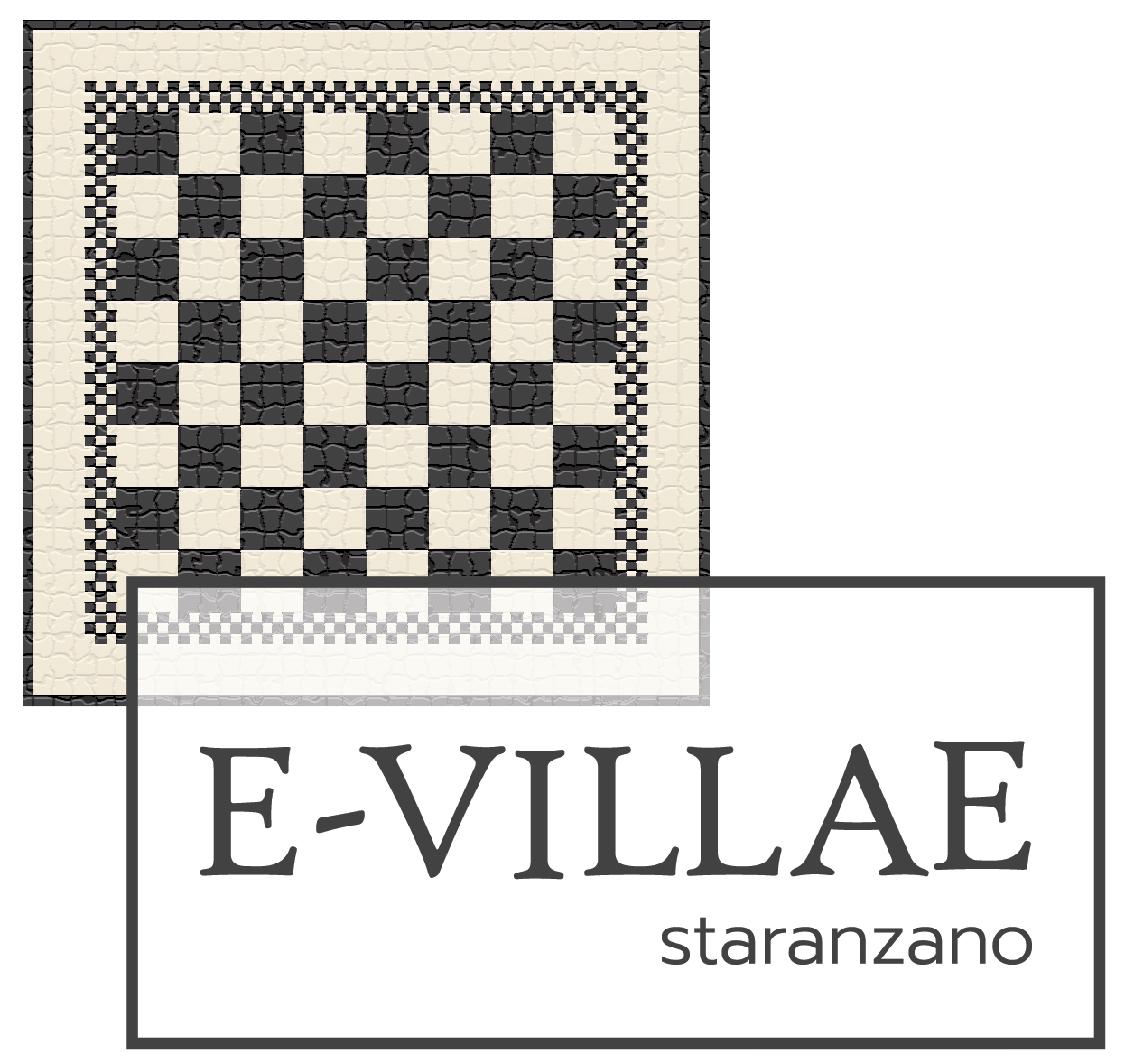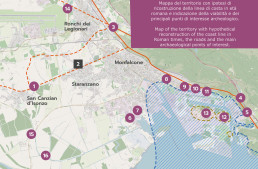Numerous archaeological records tell us that as early as the first century B.C. the territory had been occupied by the Romans, thanks to the construction of an important road network leading eastward from Aquileia. A section of it (1), which crossed the territory of Staranzano in the vicinity of the villa [2], headed toward Tergeste (Trieste).
This route connected to other roadways near present-day Ronchi dei Legionari where a bridge over 200 meters long crossed an ancient riverbed of the Soča River (3).
The road from here to Tergeste crossed the Locavaz River on a stone bridge (4). On it stood, near the mouth of the Timavo, the Randaccio villa (5), a resting place for travelers (mansio).
Il territorio era caratterizzato da una fitta serie di insediamenti di tipo residenziale e produttivo, attivi tra la metà del I secolo a.C. e gli inizi del III secolo d.C., di cui oggi rimane visibile ben poco.
Lungo la costa, allora più arretrata di oggi, sorgevano numerose ville, talvolta dotate di approdo. Le principali sono state individuate a Monfalcone in via dei Bagni Nuova (6), in località Marcelliana (7), in via delle Mandrie (8), in via Colombo (9), presso l’impianto ENEL (10), in località Tavoloni (11) e sull’isola detta della Punta, prospiciente l’antica linea di costa, dove è stata rinvenuta pure un’imbarcazione (12). Nell’area si trovava anche un impianto termale (13). L’isola è ora inglobata nella terraferma.
Inland, on the other hand, archaeological research has identified a number of rustic villas (today we would call them agricultural estates) located along the main land and river routes, such as the villa at Staranzano (called "della liberta Peticia") and the villa at Ronchi dei Legionari (14). Others existed in the territory of San Canzian d'Isonzo, such as that of Casale Rondon (15) and that of Gorgat (16).

